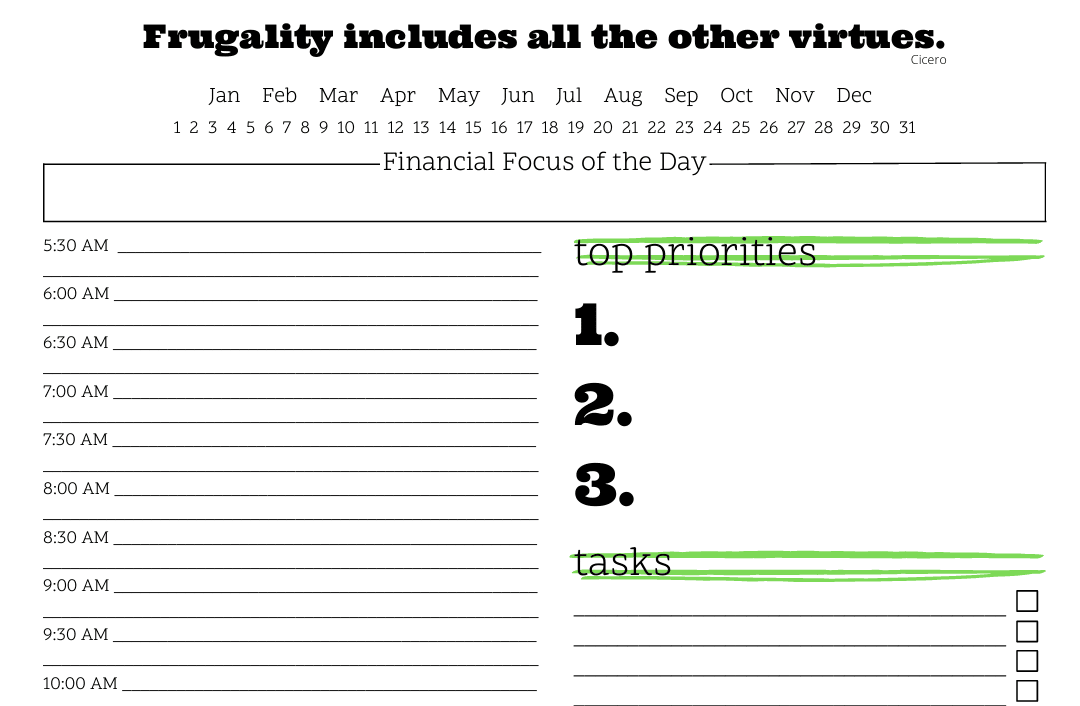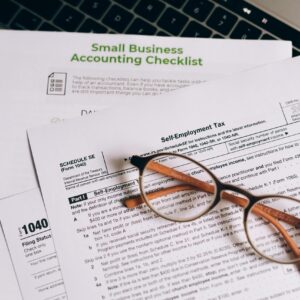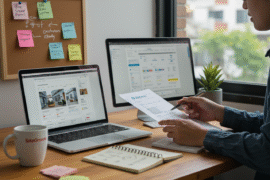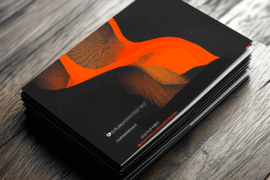This article may contain references to products or services from one or more of our advertisers or partners. We may receive compensation when you click on links to those products or services. Nonetheless, our opinions are our own.
The information presented in this article is accurate to the best of our knowledge at the time of publication. However, information is subject to change, and no guarantees are made about the continued accuracy or completeness of this content after its publication date.
- Key Highlights
- Introduction
- Understanding the Basics of a Classified Balance Sheet
- Defining a Classified Balance Sheet
- Key Differences Between Classified and Standard Balance Sheets
- The Significance of a Classified Balance Sheet in Financial Planning
- Enhancing Financial Clarity and Decision Making
- Role in Strategic Financial Analysis and Forecasting
- Preparing for Your Classified Balance Sheet
- Essential Documents and Information Needed
- Overview of Financial Categories and Classifications
- A Beginner’s Guide to Creating a Classified Balance Sheet
- Conclusion
-
Frequently Asked Questions
- What Makes a Classified Balance Sheet Different?
- How Often Should I Update My Classified Balance Sheet?
- Can Small Businesses Benefit from a Classified Balance Sheet?
- What Are Some Common Mistakes to Avoid in Classified Balance Sheets?
- How Does a Classified Balance Sheet Improve Financial Transparency?
- Recommended Reads
Key Highlights
- A classified balance sheet organizes assets and liabilities into categories. This makes seeing a company’s financial health easier than a regular balance sheet.
- A clear view of finances helps you analyze important financial ratios, make forecasts, and make wise decisions based on liquidity and liabilities.
- You need to organize financial data into categories to create a classified balance sheet. This involves adding current assets, fixed assets, liabilities, and equity, while following accounting rules.
- Key information includes current assets, fixed assets, liabilities, shareholder equity, and supporting documents.
- Understanding categories like current assets, fixed assets, intangible assets, current liabilities, and long-term liabilities is crucial for proper classification.
Introduction
In financial planning, understanding a company’s financial statements is essential. A classified balance sheet helps with this by providing a clearer picture of the company’s financial position than a regular balance sheet. It organizes assets and liabilities into categories, making it an important tool for effective financial planning. This setup gives a better and more valuable view of a company’s financial health.
Understanding the Basics of a Classified Balance Sheet
A classified balance sheet is a type of financial statement that displays a company’s assets, liabilities, and equity at a specific time. The key difference from a regular balance sheet is that it arranges these items into subcategories. This makes it easier for people to understand the company’s financial health.
This breakdown is useful for investors, creditors, and management. It helps them understand how much cash the company has and how much debt it carries, giving them a better idea of its financial situation.
Defining a Classified Balance Sheet
A classified balance sheet organizes a company’s assets, liabilities, and equity into separate categories, making it easier to assess the company’s financial position. Unlike a regular balance sheet, which lists everything together, a classified balance sheet divides the information by type and due date.
Current assets include cash, accounts receivable (money owed to the company), and inventory. These assets should be converted into cash or used within a year. Current liabilities are short-term debts, such as short-term loans, that need to be paid within the year.
This classification helps you better understand the company’s liquidity, i.e., how well it can meet its short-term obligations using its assets.
Key Differences Between Classified and Standard Balance Sheets
The main difference is in the level of detail and organization. A traditional balance sheet provides a simpler view by listing all assets and liabilities without categorizing them. In contrast, a classified balance sheet groups similar items together, making assessing the company’s financial position easier.
Here’s a table summarizing the key differences:
| Feature | Classified Balance Sheet | Standard Balance Sheet |
|---|---|---|
| Categorization | Assets and liabilities are categorized into specific groups | Assets and liabilities are listed without specific categorization |
| Level of Detail | Provides more detail, offering better insights into financial health | Presents a simplified view, making it harder to analyze specific aspects |
| Analysis | Easier to calculate financial ratios and assess liquidity, solvency, and profitability | Limited ability to perform detailed financial analysis |
The Significance of a Classified Balance Sheet in Financial Planning
A classified balance sheet is a valuable tool for managing finances. It offers a clear picture of a company’s financial health by categorizing assets and liabilities. This helps you assess the company’s liquidity and overall performance.
This clarity is crucial for making informed financial decisions, understanding risks, and planning investments and loans.
Enhancing Financial Clarity and Decision Making
Categorizing assets and liabilities makes understanding a company’s financial health easier. By separating short-term and long-term assets, you can assess whether the company can pay its short-term debts. This is crucial for understanding liquidity.
Analyzing liabilities helps identify the company’s debt obligations and its ability to sustain operations over time. This transparency is important for financial planning, as investors can identify risks, creditors can assess repayment likelihood, and management can make better decisions about investments and operations.
Role in Strategic Financial Analysis and Forecasting
A classified balance sheet is a powerful tool for understanding finances and planning for the future. It highlights the relationship between assets and liabilities, which can help predict a company’s performance. For example, increasing accounts receivable could indicate potential future revenue.
Monitoring the age of fixed assets helps determine the need for future capital expenditures. Additionally, reviewing equity, which includes retained earnings, shows how much of the company’s net income is reinvested in the business, providing insight into its financial health and growth potential.
Preparing for Your Classified Balance Sheet
Creating a classified balance sheet requires collecting and organizing financial data from various sources. First, gather all relevant information about your company’s assets, liabilities, and equity. This could include bank statements, loan documents, invoices, and other financial records. The goal is to accurately represent all financial activity on the balance sheet to understand the company’s financial position better.
Essential Documents and Information Needed
To create a classified balance sheet, you must understand the fundamental accounting equation: Assets = Liabilities + Equity. This equation keeps everything balanced.
Start by identifying all the assets your company owns. These are split into two main categories:
- Current Assets: Cash, accounts receivable, inventory, and prepaid expenses.
- Non-Current Assets: Fixed assets (like buildings and equipment) and intangible assets (like patents, trademarks, and goodwill).
Next, look at liabilities. Again, there are two categories:
- Current Liabilities: Short-term obligations like accounts payable, salaries, and short-term loans.
- Non-Current Liabilities: Long-term debts like mortgages or bank loans.
Finally, calculate equity, which includes contributed capital, retained earnings, and other equity items.
Overview of Financial Categories and Classifications
Knowing the various categories of a balance sheet is essential for proper classification. The main categories are:
- Current Assets: Items that are expected to be turned into cash or used within one year.
- Fixed Assets: Physical items like property and machinery last over a year.
- Intangible Assets: Non-physical assets like trademarks, patents, and brand value.
- Current Liabilities: Debts that must be paid within one year.
- Long-Term Liabilities: Debts due after one year.
Properly classifying these categories helps you understand your company’s financial position.
A Beginner’s Guide to Creating a Classified Balance Sheet
Creating a balance sheet may seem difficult initially, but it becomes easier when you break it down into steps. First, gather and organize all your financial information. Then, total up your assets, liabilities, and equity. Finally, prepare the balance sheet following accounting rules. By doing this, you’ll end up with a clear and accurate financial snapshot, even if you’re new to accounting.
Step 1: Organize Financial Data into Categories
List all the company’s assets, dividing them into two groups:
- Current Assets: Cash, accounts receivable, inventory, prepaid expenses.
- Non-Current Assets: Property, equipment, intangible assets.
Step 2: Calculate Total Assets, Liabilities, and Equity
- Assets: Add up current and non-current assets to find total assets.
- Liabilities: Sum current and non-current liabilities to determine total liabilities.
- Equity: Calculate equity using the accounting equation: Equity = Assets – Liabilities.
Step 3: Format the Balance Sheet According to Classification Standards
Once you’ve organized the numbers, create the balance sheet by listing:
- Assets: Start with current assets and then list non-current assets.
- Liabilities and Equity: List current liabilities first, followed by long-term liabilities. After that, list the equity section.
Ensure that you include the date of the balance sheet to avoid confusion.
Conclusion
A classified balance sheet is an essential tool for financial planning. It provides a clear picture of a company’s financial health and helps make informed decisions. Small businesses, in particular, can benefit from a classified balance sheet, as it simplifies financial information. By staying organized and updating the balance sheet regularly, it can help guide smart financial decisions and better management practices.
Frequently Asked Questions
What Makes a Classified Balance Sheet Different?
A classified balance sheet organizes assets and liabilities into categories, making it easier to assess a company’s financial position than a regular balance sheet.
How Often Should I Update My Classified Balance Sheet?
Reviewing your balance sheet every three months to track changes in assets, liabilities, and net worth is a good idea.
Can Small Businesses Benefit from a Classified Balance Sheet?
Small businesses can use a classified balance sheet to manage their finances more effectively. It provides a clear view of assets, liabilities, and overall financial health.
What Are Some Common Mistakes to Avoid in Classified Balance Sheets?
- Ensure items are placed in the correct categories.
- Double-check all calculations.
- Remember, a balance sheet is a snapshot of financial health at a specific time.
How Does a Classified Balance Sheet Improve Financial Transparency?
A classified balance sheet is easy to read and helps stakeholders understand the company’s financial health, offering a clear picture of assets, liabilities, and equity.

Reviewed and edited by Albert Fang.
See a typo or want to suggest an edit/revision to the content? Use the contact us form to provide feedback.
At FangWallet, we value editorial integrity and open collaboration in curating quality content for readers to enjoy. Much appreciated for the assist.
Did you like our article and find it insightful? We encourage sharing the article link with family and friends to benefit as well - better yet, sharing on social media. Thank you for the support! 🍉
Article Title: Why a Classified Balance Sheet is Crucial for Accurate Financial Planning
https://fangwallet.com/2024/12/19/classified-balance-sheet/The FangWallet Promise
FangWallet is an editorially independent resource - founded on breaking down challenging financial concepts for anyone to understand since 2014. While we adhere to editorial integrity, note that this post may contain references to products from our partners.
The FangWallet promise is always to have your best interest in mind and be transparent and honest about the financial picture.
Become an Insider

Subscribe to get a free daily budget planner printable to help get your money on track!
Make passive money the right way. No spam.
Editorial Disclaimer: The editorial content on this page is not provided by any of the companies mentioned. The opinions expressed here are the author's alone.
The content of this website is for informational purposes only and does not represent investment advice, or an offer or solicitation to buy or sell any security, investment, or product. Investors are encouraged to do their own due diligence, and, if necessary, consult professional advising before making any investment decisions. Investing involves a high degree of risk, and financial losses may occur including the potential loss of principal.
Source Citation References:
+ Inspo












































